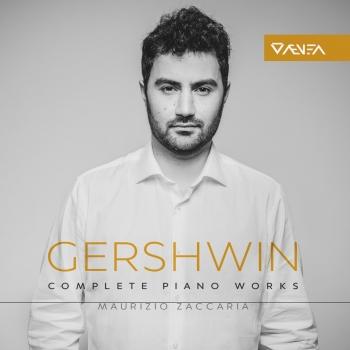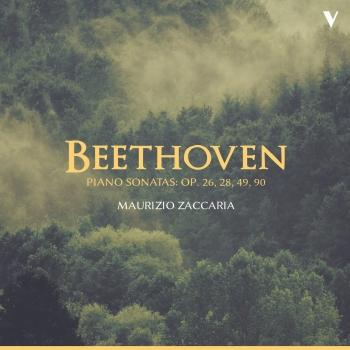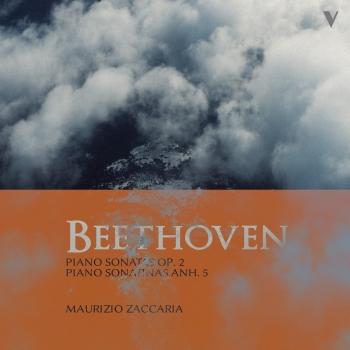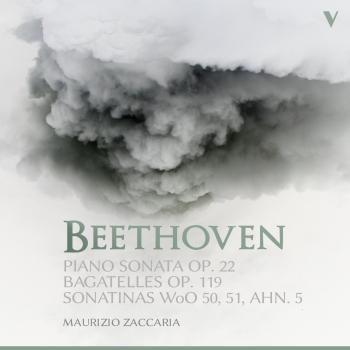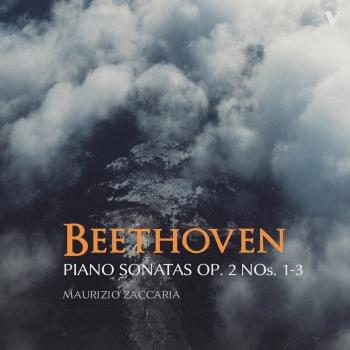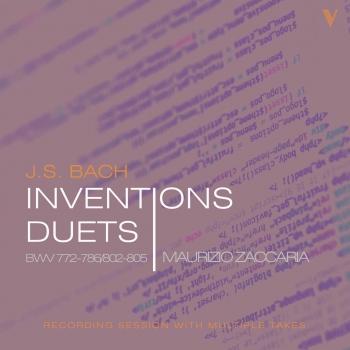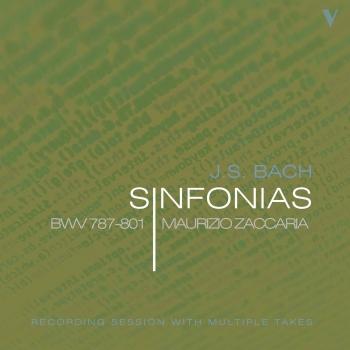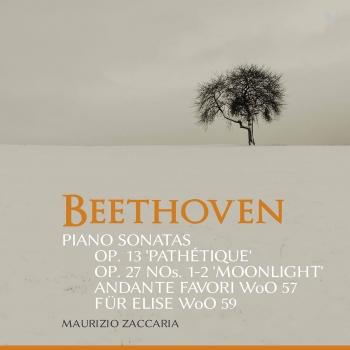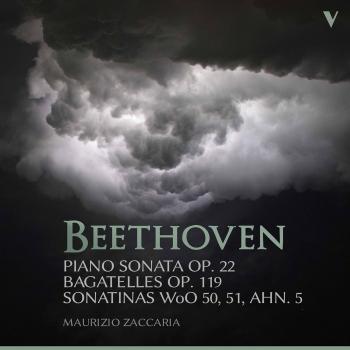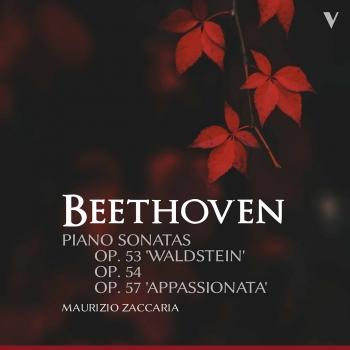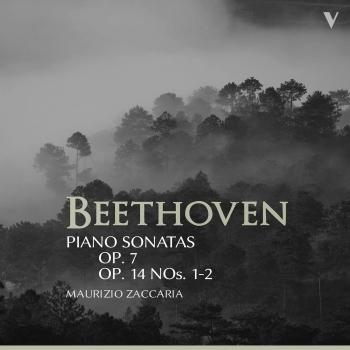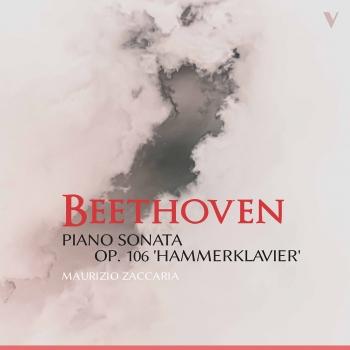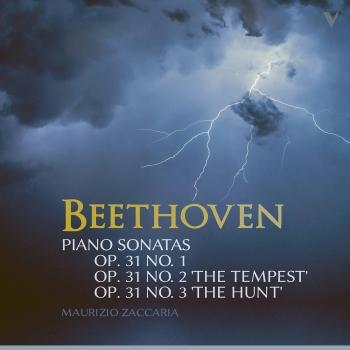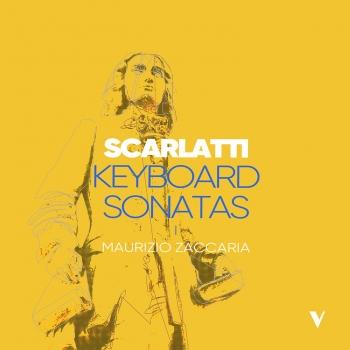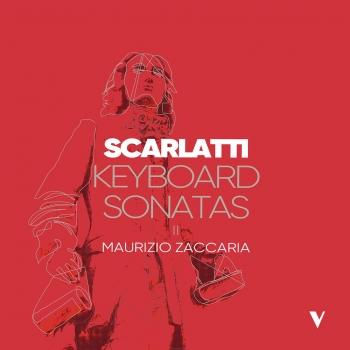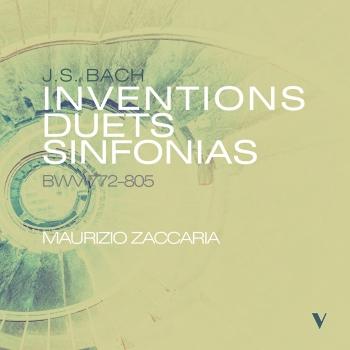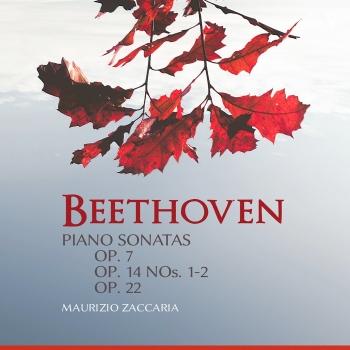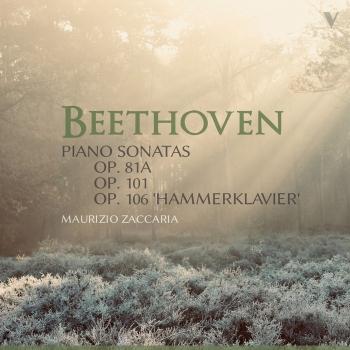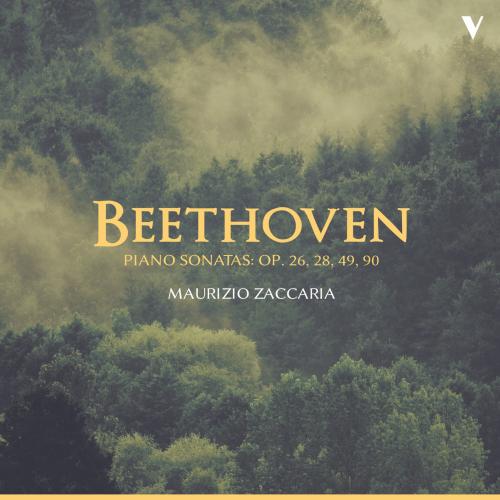
Beethoven: Piano Sonatas Nos. 12, 15, 19, 20 & 27 Maurizio Zaccaria
Album Info
Album Veröffentlichung:
2018
HRA-Veröffentlichung:
19.01.2018
Label: OnClassical
Genre: Classical
Subgenre: Instrumental
Interpret: Maurizio Zaccaria
Komponist: Ludwig van Beethoven (1770-1827)
Das Album enthält Albumcover
- Ludwig van Beethoven (1770 - 1827): Piano Sonata No. 12 in A-Flat Major, Op. 26 "Funeral March":
- 1 I. Andante con variazioni 07:50
- 2 II. Scherzo. Molto allegro 02:45
- 3 III. Marcia funebre sulla morte d'un eroe 07:14
- 4 IV. Allegro 02:45
- Piano Sonata No. 15 in D Major, Op. 28 "Pastoral":
- 5 I. Allegro 09:25
- 6 II. Andante 05:48
- 7 III. Scherzo. Allegro vivace 02:13
- 8 IV. Rondo. Allegro ma non troppo 05:24
- Piano Sonata No. 19 in G Minor, Op. 49 No. 1:
- 9 I. Andante 04:12
- 10 II. Rondo. Allegro 02:59
- Piano Sonata No. 20 in G Major, Op. 49 No. 2:
- 11 I. Allegro ma non troppo 03:55
- 12 II. Tempo di menuetto 02:57
- Piano Sonata No. 27 in E Minor, Op. 90:
- 13 I. Mit lebhaftigkeit und durchaus mit Empfindung und Ausdruck 05:55
- 14 II. Nicht zu geschwind und sehr singbar vorgetragen 08:09
Info zu Beethoven: Piano Sonatas Nos. 12, 15, 19, 20 & 27
Ludwig van Beethoven composed his Piano Sonata No. 12 in A-flat major, Op. 26, in 1800–1801, around the same time as he completed his First Symphony. The structure of the sonata is unconventional in that the piece opens with a relatively slow movement in the format of theme and variations. The third movement incorporates a funeral march, clearly anticipating the watershed of the Eroica Symphony that Beethoven wrote in 1803–1804. This is the only movement from his sonatas that Beethoven arranged for orchestra, and was played during Beethoven's own funeral procession in 1827.
While not as famous as its immediate predecessor, Piano Sonata No. 14, No. 15 in D major, Op. 28 was known as 'Pastoral' or 'Pastorale', and published in 1801. The sonata is in D major, and follows the typical four-movement form of the classical sonata.
The Piano Sonata No. 19 in G minor, Op. 49, No. 1, and Piano Sonata No. 20 in G major, Op. 49, No. 2, are short sonatas, published in 1805 (although the works were actually composed a decade earlier in 1795-1796).
Piano Sonata No. 27 in E minor, Op. 90 was written in the summer of 1814 – Beethoven's late Middle period. Beethoven's previous piano sonata, popularly known as 'Les Adieux', was composed almost five years prior to Op. 90. Beethoven's autograph survives and is dated August 16. The sonata was published almost a year later, in June 1815. The piece consists of just two movements with performance instructions in German.
Maurizio Zaccaria, piano
Maurizio Zaccaria
After a diploma in piano at "Niccola Piccinni" Conservatory of Music in Bari under the guidance of Gregorio Goffredo and a master at "Nino Rota" Conservatory of Music in Monopoli under the guidance of Benedetto Lupo, he attended the masterclasses of Marisa Somma, Cristian Zaccarias, Joaquin Achucarro, Francois J. Thiollier, Konstantin Bogino et Aldo Ciccolini.
He went on to win several national and international piano competitions: Rachmaninoff International Piano Competition, Liszt International Piano Competition (the famous Argentine pianist Martha Argerich was in the jury), Thalberg International Piano Competition, International Music Competition in Ibla, "San Nicolaus" International Piano Competition International, Piano Festival in Osnabruch (Germania), Cliburn Piano Competition in Texas (USA). In 2008 he was awarded the "Umanitaria" Society price in Milan (president Maestro Abbado); during the same year he was also awarded the Arts Price of the Italian Cultural Ministry, after which he played at the Parco della Musica in Rome. He plays in Italy and abroad in some important halls: Auditorium della Radio Televisione Svizzera (Lugano); Salle Cortot (Paris); Institut Italien de Culture (Paris); Sala Gaber (Milan); Parco della Musica (Rome); Sala Scarlatti (Naples); Teatro delle Muse (Ancona); Teatro Piccinni et Kursaal Santa Lucia (Bari); Teatro Bibiena (Mantova); Villa Ruffolo (Ravello); Teatro Wan Vesterhout (Mola di Bari); Auditorium V. Falco (playing two pianos with Aldo Ciccolini); Teatro Curci (Bari). Maurizio Zaccaria plays for important associations: Fondazione Petruzzelli (Bari); URTIcanti contemporary music festival; Ravello festival; PianoFestival (Grosseto); A.R.A.M. (Rome); Gaeta Festival; Accademia dei Cameristi (Bari). In March 2007 he debuted in the USA, during a series of concerts playing Bartok's compositions, among which his Sonata for two pianos and percussions. His last concerts with Bari Concert Society orchestra and Taranto Magna Grecia orchestra, respectively devoted to Shostakovic's Concerto Op. 35 and Rachmaninoff's Third Concerto Op. 30 have fascinated audience and critics. He played as a soloist with Petruzzelli Symphonic Orchestra, (Bari), "Nino Rota" orchestra (Monopoli, Bari) conducted by Filippo Maria Bressan, with Cosenza Symphonic orchestra, Bacau symphonic orchestra, Matera Duni Orchestra (there he played Gershwin's best symphonic pieces for piano, Concerto in Fa and Rapsody in Blue) and with Bari Metropolitan Symphonic orchestra. He was invited by the Italian embassy in Pogdorica where he played music by Fauré, Debussy and Schostakovic. He is also a composer, and he debuted some compositions by Goeffroy Drouin, Luca Lombardi, Lera Auerbach, Luca Mosca, Andrea Marena and Fabio Vacchi. He also pays chamber music and he collaborates with flutist Leonardo Grittani.
Dieses Album enthält kein Booklet










